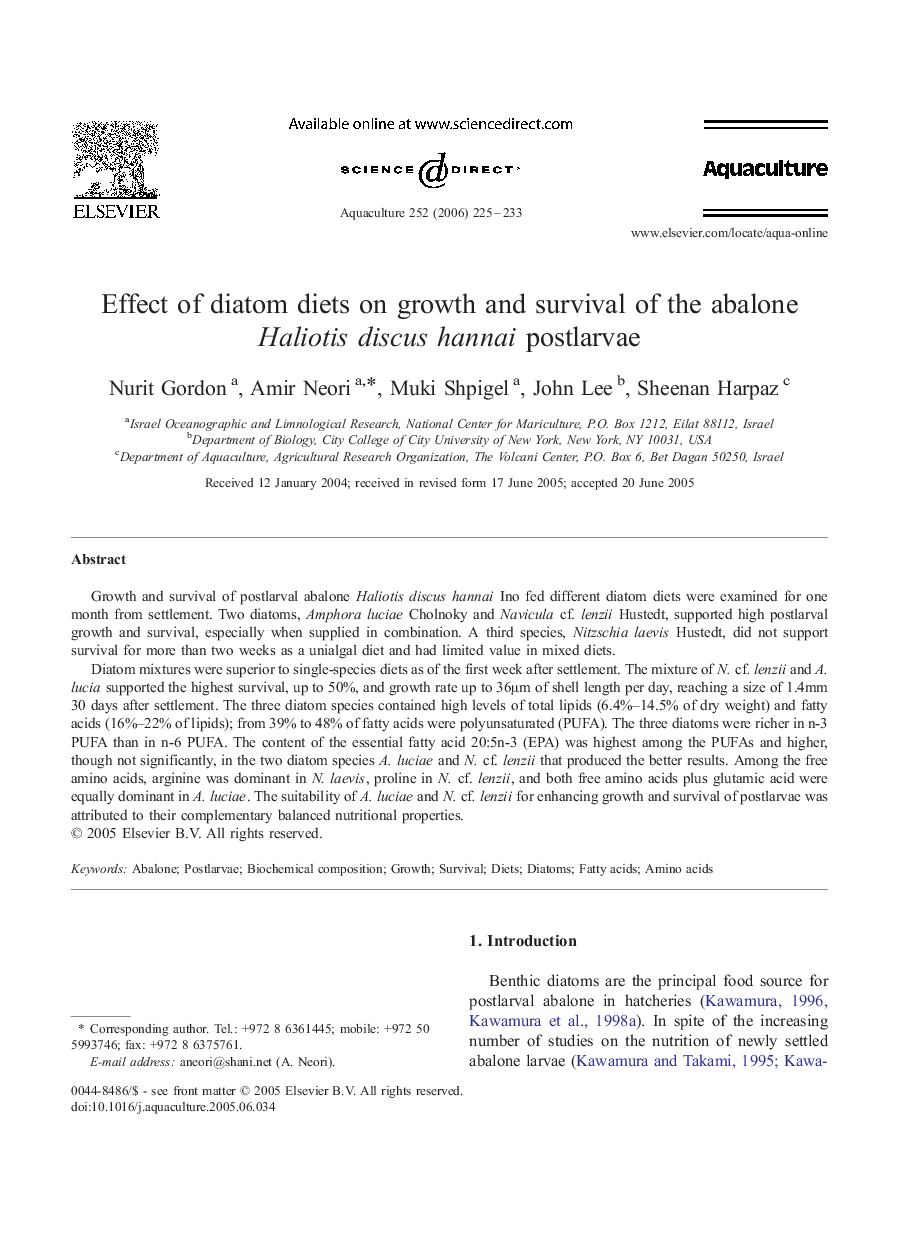| Article ID | Journal | Published Year | Pages | File Type |
|---|---|---|---|---|
| 2426154 | Aquaculture | 2006 | 9 Pages |
Growth and survival of postlarval abalone Haliotis discus hannai Ino fed different diatom diets were examined for one month from settlement. Two diatoms, Amphora luciae Cholnoky and Navicula cf. lenzii Hustedt, supported high postlarval growth and survival, especially when supplied in combination. A third species, Nitzschia laevis Hustedt, did not support survival for more than two weeks as a unialgal diet and had limited value in mixed diets.Diatom mixtures were superior to single-species diets as of the first week after settlement. The mixture of N. cf. lenzii and A. lucia supported the highest survival, up to 50%, and growth rate up to 36μm of shell length per day, reaching a size of 1.4mm 30 days after settlement. The three diatom species contained high levels of total lipids (6.4%–14.5% of dry weight) and fatty acids (16%–22% of lipids); from 39% to 48% of fatty acids were polyunsaturated (PUFA). The three diatoms were richer in n-3 PUFA than in n-6 PUFA. The content of the essential fatty acid 20:5n-3 (EPA) was highest among the PUFAs and higher, though not significantly, in the two diatom species A. luciae and N. cf. lenzii that produced the better results. Among the free amino acids, arginine was dominant in N. laevis, proline in N. cf. lenzii, and both free amino acids plus glutamic acid were equally dominant in A. luciae. The suitability of A. luciae and N. cf. lenzii for enhancing growth and survival of postlarvae was attributed to their complementary balanced nutritional properties.
